Becoming a Telehealth Nurse in the United States is a rewarding career path with flexible work options, high demand, and the opportunity to improve patient access to care. A telehealth nurse is a registered nurse (RN) or nurse practitioner (NP) who uses technology (like video calls, phone, and remote monitoring) to assess, educate, and care for patients without in-person visits.
In this comprehensive career guide, we’ll walk through how to enter this growing field – covering the education and licensing you’ll need (from nursing school to the NCLEX exam and state licensure), the typical timeline and costs to specialize in telehealth, salary expectations and job outlook, daily work settings and duties, possible specializations, key skills, and pros and cons of the role.
What Is a Telehealth Nurse?
A Telehealth Nurse is a licensed nurse (usually an RN, and sometimes an advanced NP) who provides nursing care and health services remotely using telecommunications technology. In plain terms, telehealth nurses care for patients “from a distance” – via phone calls, video chats, secure messaging, and remote monitoring devices – rather than seeing patients in-person in a clinic or hospital. They perform many of the same duties as traditional nurses (such as assessing symptoms, answering health questions, developing care plans, and educating patients) but do so through virtual means.
Telehealth nurses can work at different levels of practice. Many are registered nurses who handle duties like telephone triage, patient education, monitoring of chronic conditions, care coordination, and follow-up calls. Others are telehealth nurse practitioners, who are advanced practice registered nurses (APRNs) with a master’s or doctoral degree, able to autonomously diagnose and treat patients via telemedicine (including prescribing medications in states where they have authority). Telehealth NPs often run virtual urgent care or primary care visits, managing common illnesses or chronic disease checkups entirely online.
According to the U.S. Bureau of Labor Statistics (BLS), there were about 3.3 million registered nurses employed in 2023, and RN employment is projected to grow 6% from 2023 to 2033 (around 194,500 job openings per year). Advanced practice nurses (including NPs, who often serve as telehealth providers) are expected to grow even faster – about 40% over the same decade. This strong job growth reflects a critical need for nurses in all settings. Notably, telehealth usage surged during the COVID-19 pandemic (one CDC report noted a 154% increase in telehealth visits in early 2020 compared to 2019) and virtual care remains far above pre-pandemic levels. Demand is rising as an aging population with more chronic illnesses requires care, and healthcare systems turn to remote services to reach patients efficiently. In short, telehealth nursing offers a promising and future-oriented career – one that blends compassionate care with cutting-edge technology. Are you ready to explore what it takes to become a telehealth nurse and shape the future of healthcare?
Difference of Telehealth Nursing and Traditional Nursing?
One key distinction between telehealth nursing and traditional nursing is the mode of interaction. Telehealth nurses rely on strong communication skills since they may not be able to physically examine patients. They use targeted questions, observation via video, and digital health data (like remote vital signs) to make clinical judgments. Despite the distance, telehealth nurses maintain a high standard of care and adhere to the same nursing principles – building rapport, advocating for patients, and providing education and support.
…telehealth is not a separate specialty but an extension of how care is deliveredClick to PostAs the American Association of Nurse Practitioners (AANP) emphasizes, telehealth is not a separate specialty but an extension of how care is delivered: “health care provided via technology should be recognized, regulated and reimbursed on parity with the same services delivered in person,” the AANP states. In other words, telehealth nurses are fully qualified nurses utilizing tech tools to reach patients in new ways.
In practice, a telehealth RN might spend the day in a call center or home office, consulting with patients by phone or video about their health concerns, whereas an on-site RN might physically check blood pressures and wounds. Telehealth NPs might manage a panel of patients via a telemedicine app, treating conditions like rashes, infections, or anxiety through video consults, while an in-person NP would perform hands-on exams. Importantly, telehealth nurses must be comfortable working independently and using critical thinking without immediate physical cues. They often follow evidence-based protocols (for example, telephone triage nurses use standardized algorithms to determine if a caller can be managed at home or needs to go to the ER). However, they also collaborate – a telehealth nurse is typically part of a broader team. They might consult with physicians or specialists remotely if a case is complex, or escalate emergencies (like calling 911 for a patient in distress).
“Nursing fills an incredible role in the telehealth space currently,” says Joelle Fathi, a telehealth nursing expert, “and it’s bound to continue expanding.”
Telehealth allows nurses to extend care beyond clinic walls and reach patients who might otherwise go without. According to the CDC, telehealth utilization skyrocketed in 2020, and while it has stabilized since, nurses now routinely incorporate telehealth into patient care. As frontline providers, telehealth nurses are key to making virtual care both effective and personal – translating the “nursing touch” into a digital environment.
How to Become a Telehealth Nurse
Embarking on a telehealth nursing career requires first becoming a licensed nurse and then building on that foundation with experience and possibly advanced training. Below are six key steps to become a telehealth nurse or telehealth nurse practitioner, along with a typical timeline. Whether you are a new nursing student or an experienced RN transitioning to remote care, these steps will guide your path:
1. Become a Registered Nurse (RN)
The journey begins with qualifying as an RN. This means earning a nursing degree (either an Associate Degree in Nursing or a Bachelor of Science in Nursing). A BSN is increasingly the preferred route, as many employers seek nurses with four-year degrees. After graduation, you must pass the NCLEX-RN – the national licensing exam – to obtain your RN license. For more information, check out our comprehensive guide on How to Become a Registered Nurse here.
| Stage | Typical Duration | Milestones & Requirements |
|---|---|---|
| Nursing Education | 2–4 years (ADN or BSN) | Complete an accredited nursing program (associate or bachelor’s). Graduate with RN-prepared degree. |
| NCLEX-RN & RN Licensure | ~3 months (prep & exam) | Apply to state board and pass the NCLEX-RN exam. Obtain RN license in your state (e.g. ~3.3 million RN jobs in 2023). Begin practicing as a Registered Nurse. |
| Clinical RN Experience | 1–3 years | Work in direct patient care to build skills. (Many employers require 2 years experience for telehealth roles.) Develop communication, assessment, and tech proficiency. |
| Graduate NP Program (if pursuing NP) | 2–4 years (MSN or DNP) | Complete an advanced nursing degree with a Nurse Practitioner specialty. Include any telehealth electives or simulation training. Prepare for expanded scope practice. |
| Certification | 2–6 months (study & exam) | For NPs: Pass national NP certification exam (e.g. AANP or ANCC) in your specialty. For RNs: consider Ambulatory Care Nursing (AMB-BC) certification to validate telehealth skills (no specific telehealth cert). |
| Licensure & Authorization | 1–3 months (varies) | Secure state APRN license if NP (after certification). For multi-state practice, obtain additional licenses or a compact RN license (for RNs in NLC states). Ensure compliance with state telehealth rules (e.g. prescribing laws, collaboration agreements). |
| Continuing Education | Ongoing (each renewal cycle) | Complete required CEUs for license renewal (often 20–30 hours every 2 years, depending on state). Focus on telehealth topics (technology, remote assessment, HIPAA for telehealth). Maintain certifications (renew every 5 years with practice hours and CE). Stay updated on telehealth innovations and best practices through professional development. |
2. Gain Clinical Experience
While not always mandatory, most telehealth employers strongly prefer nurses with some bedside or clinical experience before practicing remotely. Working 1–2 years (or more) in a traditional patient care setting (hospital, clinic, etc.) helps you build a solid foundation in assessment, critical thinking, and patient communication. It’s helpful to get experience in areas like ambulatory care, triage, home health, or chronic disease management, since telehealth roles often involve these. During this time, also build your technology skills by using electronic health record (EHR) systems and any telehealth tools your facility has.
3. Complete a Graduate Nursing Program (optional)
If you aim to become a Telehealth Nurse Practitioner (which allows you to diagnose and prescribe), you will need to earn a graduate degree. This means enrolling in an Nurse Practitioner program – typically a Master’s of Science in Nursing (MSN) or a Doctor of Nursing Practice (DNP) focused on a nurse practitioner specialty (such as Family NP, Adult-Gerontology Primary Care, etc.). Many programs now include telehealth training or simulations as part of the curriculum.
4. Obtain Required Certification
Telehealth nursing itself does not have a specific mandatory certification (it’s considered a delivery method, not a standalone specialty by certifying bodies). However, you can boost your credentials through related certifications. For RNs, a recommended path is the Ambulatory Care Nursing Certification (AMB-BC) through ANCC, which covers telephone triage and telehealth competencies. The American Academy of Ambulatory Care Nursing encourages telehealth RNs to pursue this, since there’s no separate telehealth RN exam.
Eligibility for AMB-BC requires 2 years of RN experience and 2,000 hours in ambulatory care plus some continuing education. For those becoming NPs, you’ll need to pass a national NP certification exam in your population focus (for example, the AANP or ANCC exam for FNP). This certifies you as a nurse practitioner.
5. Secure Licensure
With your RN license (and APRN license if applicable), ensure you meet any additional licensure needs for telehealth. RNs should consider obtaining a multistate license if they reside in a Nurse Licensure Compact state, as telehealth often involves patients across state lines. Practice laws require that an RN be licensed in the state where the patient is located. An NLC multistate license allows an RN to legally practice (including via telehealth) in 40+ compact states with one license, removing barriers to interstate tele-nursing.
If you’re an NP, you’ll need to apply for state APRN licensure after your certification – typically from the board of nursing – and you may need additional licenses to treat patients in multiple states (since, as of 2025, there is not yet a compact for APRN licenses).
Additionally, telehealth NPs must be mindful of varying scope-of-practice laws: in some states NPs can practice independently, in others they need a physician agreement. Be sure to follow all regulations for each state you serve.
6. Engage in Continuing Education and Training
The learning doesn’t stop once you start working. Telehealth nurses should pursue ongoing continuing education (CE) on topics like telehealth best practices, technology updates, and virtual communication skills. Most states require RNs to complete a certain number of CE hours for license renewal every 1-2 years, so you can choose courses related to telehealth to meet these. You may also undergo employer-provided training on the telehealth platform or protocols used.
Keeping your tech skills sharp – from troubleshooting video call issues to using remote monitoring software – is crucial. Additionally, maintain any certifications (RN Ambulatory Care certification needs renewal every 5 years with practice hours and CEs; NP certifications also typically renew every 5 years with practice hours/CE or re-exam). Staying active in telehealth professional groups or communities can also help you exchange knowledge and keep up with policy changes in telehealth.
By following these steps, you’ll build the qualifications needed to thrive as a telehealth nurse. Next, we’ll break down the costs involved in this career path and how to plan for them.
How Much Does it Cost to Become a Telehealth Nurse?
Like any nursing career, becoming a telehealth nurse involves several educational and licensing expenses. It’s important to plan for these costs – but also know there are ways to save through public schooling, scholarships, and employer assistance. Below is an overview of the major cost components, followed by a detailed table:
Nursing School Tuition
This is typically the biggest expense. A four-year BSN program can range widely in cost – from about $90,000 up to over $200,000 total (including tuition, fees, and living expenses) for a private university, with public in-state programs on the lower end. The average annual cost for a BSN is around $30,000 (including housing), but choosing community college for an ADN first or attending a state school can significantly reduce this. Many students also offset costs via financial aid or by working as a nursing aide during school.
| Cost Component | Estimated Cost | Notes & Cost-Saving Tips |
|---|---|---|
| ADN Program Tuition | $15,000 – $60,000 total | Community college tuition; work as a nursing aide; scholarships. |
| BSN Program Tuition | $90,000 – $200,000 total | Consider RN-to-BSN bridge, financial aid, employer tuition aid. |
| MSN Program Tuition | $28,000 – $80,000 total | Online vs. campus; public vs. private; look for graduate assistantships or reimbursement programs. |
| DNP Program Tuition | $110,000 – $170,000 total | Longer timeline; BSN-to-DNP tracks may be cheaper; employer support. |
| NCLEX-RN Exam Fee | $200 | Mandatory; free online study resources can replace paid prep courses. |
| Initial RN Licensure (State Board Fee) | $50 – $300 | Varies by state; bundle fingerprint/background check when possible; Nurse Licensure Compact for multi-state coverage. |
| NP Certification Exam | $240 – $395 | AANP member ($240) vs. non-member ($315); ANCC member ($315) vs. non-member ($395). |
| Ambulatory Care RN Cert Exam (optional) | $295 – $395 | ANCC member ($295) vs. non-member ($395); boosts RN telehealth credentials. |
| State License Renewal | $50 – $150 per cycle | Every 1–2 years; some employers cover renewal fees. |
| Additional State Licenses | $100 – $300 each | Needed for multi-state practice; compact upgrade (~$100) reduces future fees. |
| Continuing Education | $0 – $200 per cycle | Free CEUs often available through professional associations (ANA, AANP, AAACN). |
NCLEX and Initial Licensure Fees
The NCLEX-RN exam costs $200 in registration fees. State licensure application fees vary – roughly $50 to $200+ depending on the state (for example, $100 in many states, but up to $300+ in others). Some states bundle fingerprint/background check fees. On average, expect about $300 total for exam and licensing to become an RN (e.g. $200 NCLEX + state fee).
Advanced Degree
If pursuing an MSN or DNP, you’ll have graduate tuition. MSN programs cost roughly $28,000 to $80,000 in total for 1–2 years (average ~$33k per year). DNP programs (if going straight to doctorate) are more expensive: often $110,000 to $170,000 total for 3–4 years. Attending a public university, online program, or BSN-to-DNP track can yield savings. Also, many employers offer tuition assistance for RNs advancing their education.
Certification Exams
If you go for Ambulatory Care Nursing certification (optional for RNs), exam applications through ANCC cost around $295 for ANA members (about $395 for non-members). For NP certification exams, fees are about $315 (AANP non-member) or $395 (ANCC non-member), with discounts for members (e.g. AANP members pay $240). You may also invest in review courses or practice exams (several hundred dollars, optional).
Licensing and Other Expenses
State RN license renewal fees every 1–2 years can range $50–$150. If you need multiple state licenses for telehealth, each application might cost $100–$300. A multistate compact license upgrade (if your state offers it) might have a fee (~$100). Continuing education courses to maintain your license/certifications can often be found free or low-cost, especially if you’re a member of a professional association that provides free CE (AANP, ANA, etc., often include many free CE hours as a benefit). Budget perhaps $0–$200 per year for CE and license renewal combined (employers sometimes cover CE or renewal fees as well).
Becoming a telehealth nurse doesn’t have to mean incurring all these costs at once. Many start as an ADN (lower cost) and then do an RN-to-BSN bridge program while working (sometimes with tuition reimbursement). If you pursue an NP, working for an employer with a tuition reimbursement program or a loan forgiveness program (like the Public Service Loan Forgiveness if you work in non-profit health systems) can defray graduate school costs. Additionally, joining nursing associations can pay off – for example, membership might give you access to free CEUs (saving money on those requirements) and discounted conference fees or resources.
What do Telehealth Nurses Do?
Telehealth nurses perform a wide array of duties, all through the lens of remote care. While specific tasks differ based on role and work setting, telehealth nurses generally focus on assessing patient needs, providing education, and coordinating care using technology. Below are some common responsibilities and what a typical workday might involve:
Patient Assessment and Triage
A large part of telehealth nursing is evaluating patient symptoms and questions remotely. Telehealth RNs often serve as triage nurses – for example, handling incoming calls or messages from patients. They ask guided questions to assess the severity of symptoms and decide on next steps. For instance, a telehealth nurse might speak to a patient with chest pain and use a protocol to determine if it’s likely indigestion or a heart attack requiring an ER visit. This requires sharp clinical judgment because you can’t physically examine the patient. Active listening and detailed history-taking are critical, since tone of voice and patient descriptions become your “eyes and ears.”

Telehealth NPs conduct more in-depth assessments via scheduled video visits, performing virtual exams (having patients point the camera to a rash, or using connected devices like a digital stethoscope or blood pressure cuff readings transmitted electronically). In all cases, telehealth nurses meticulously document assessments in the electronic health record just as they would in person.
Patient Education and Coaching
Telehealth nurses play a major role in teaching and advising patients. This can range from explaining how to manage symptoms at home (“drink fluids, rest, and here’s when to call us back or go to urgent care”) to counseling a patient on chronic disease management (like guiding a diabetic patient on blood sugar logging and insulin use over the phone).
Nurses also educate patients on using the telehealth technology itself – for example, helping an elderly patient install a blood pressure monitoring app or instructing a parent how to position a thermometer for an otoscope attachment to look at a child’s ear. Education in telehealth is often one-on-one and ongoing; you might follow up with a patient in a few days to reinforce instructions or check progress.
Empowering patients with knowledge is at the heart of nursing, and telehealth nurses extend that reach into the home. Many telehealth nurses find they actually get more opportunities to educate patients, since virtual visits often focus heavily on discussion, coaching, and answering questions (with patients sometimes more relaxed at home).
Care Coordination and Follow-Up
Telehealth nurses act as care coordinators, ensuring patients get the right care at the right time. For example, after a hospital discharge, a telehealth RN may call the patient at home to follow up, review medications, and answer any questions – helping prevent readmissions.
Telehealth nurses also coordinate referrals: if during a video consult a NP sees that a patient has an eye issue outside her scope, the NP will arrange for a referral to an ophthalmologist (and might even help schedule a tele-ophthalmology visit). Many telehealth programs target chronic disease; a telehealth nurse might manage a panel of congestive heart failure patients, monitoring their daily weight and symptoms via a remote app and coordinating quick interventions (like a medication adjustment from the cardiologist) if a patient shows warning signs of exacerbation.
In essence, telehealth nurses serve as the link between patients and the healthcare system, remotely navigating them to the appropriate level of care. They might liaise with pharmacies (e.g., sending e-prescription refills), arrange home health services, or alert local emergency services if a patient’s situation warrants it during a call.
Use of Technology and Documentation
Every telehealth nurse’s day involves using multiple tech tools. These include secure video conferencing platforms, telehealth software that might integrate scheduling and chat, remote patient monitoring dashboards (for tracking things like blood glucose readings or heart rate transmitted by devices), and EHR systems for charting.
Telehealth nurses must be comfortable troubleshooting minor tech issues – for instance, coaching a patient who can’t unmute their microphone, or switching to a backup method (like a phone call) if video fails. They also have to maintain HIPAA compliance in the digital space: ensuring they use secure connections, verify patient identity, and document consent for telehealth.
A typical routine might involve logging into a telehealth dashboard, reviewing the queue of patients or messages, conducting back-to-back virtual visits, and updating records after each encounter. In some telehealth call centers, nurses wear headsets and use multi-line phone systems or software that manages incoming calls and prioritizes those based on urgency.
Time management is key – a telehealth nurse might handle dozens of brief patient interactions a day, or a telehealth NP might have a schedule of 15–20 minute appointments. They must document efficiently yet thoroughly. Many find that telehealth generates significant electronic documentation (since “if you didn’t chart it, it didn’t happen” – even more crucial when no physical exam is done). Templates and checklists are often used to ensure no detail is missed in remote assessments.
Awareness on Scope of Practice
An important aspect of the telehealth nurse’s role is knowing the limits of what can be done remotely and the legal scope in their state. For RNs, this means following protocols and knowing when to escalate to an NP or MD. For example, a telephone triage RN usually has clear guidelines on which symptoms require an immediate 911 dispatch, a same-day in-person evaluation, or home care advice. They operate under physician-approved protocols or as part of a practice where a provider is available for consultation.
For NPs, scope-of-practice laws vary by state: in full-practice states, a telehealth NP can independently assess, diagnose, and prescribe; in restricted states, they might need a collaborative agreement – which could mean a supervising physician needs to be available or sign off on certain care. Additionally, each state’s telehealth laws might impose rules (e.g., some states mandate an initial in-person visit before prescribing controlled substances via telehealth).
A telehealth NP working with patients in multiple states must navigate each state’s requirements. For instance, a telehealth psychiatric NP might manage patients in two states; if one state doesn’t allow tele-prescribing of certain medications without an in-person exam, the NP must arrange appropriate in-person referrals. Thus, telehealth nurses stay up-to-date on regulations and practice within those boundaries. Many employers provide guidance on this, and professional organizations (like the American Nurses Association) publish core principles to ensure nurses uphold standards in telehealth practice.
Where Do Telehealth Nurses Work?
Telehealth nurses work across a variety of settings, from centralized call centers and dedicated telehealth hubs to traditional hospitals and clinics with virtual care programs. In call centers—often operated by large health systems or insurers—RNs handle incoming patient inquiries around the clock, sometimes from home. Hospitals and clinics deploy telehealth nurses for follow-up care and urgent video visits, such as pediatric triage after hours. Private telehealth companies (e.g., Teladoc and Amwell) also employ RNs and NPs to serve diverse patient populations via their platforms.
Specialty roles abound, too. Tele-ICU nurses monitor critical patients from command centers, watching real-time vitals and collaborating with bedside staff remotely. Mental health nurses provide counseling and case management online, while school telehealth nurses support students via virtual carts in classrooms. Despite the different environments, all telehealth nurses combine clinical expertise, sharp communication, and technology to assess patients, provide education, and coordinate care from a distance. Working independently yet in concert with broader teams, they gain unique insights by seeing patients in their home contexts—spotting safety issues or support systems that might otherwise go unnoticed—and ensuring timely, personalized care wherever it’s needed.
Telehealth Nurse Specializations and Subspecialties
Telehealth nursing is a broad field, and nurses can specialize in various roles or patient populations within telehealth. While telehealth itself is a mode of delivery, there are distinct niches a telehealth nurse might focus on. Here are some of the major telehealth nurse specializations and subspecialties, with brief descriptions of each:
Telehealth Triage Nurse (Telephone Triage Nurse)
This is a common role for RNs in telehealth. Triage nurses assess patient symptoms over the phone or via chat and provide guidance. They determine the level of care needed – for example, advising self-care at home, scheduling a next-day appointment, or directing the patient to the ER immediately. Triage nurses use specialized protocols to ensure safe decisions. They often work for after-hours services, primary care offices, pediatric practices, or nurse hotline centers. Subspecialty tip: Some triage nurses focus on specific populations (pediatric triage nurse, OB/GYN triage nurse, etc.), learning the nuances of those patient inquiries.
Tele-ICU / Remote Critical Care Nurse
In tele-ICU setups, experienced critical care nurses monitor ICU patients from a central remote command center in collaboration with intensivist physicians. A tele-ICU nurse might watch vital signs of dozens of ICU beds across multiple hospitals in real time, alerting on-site staff to subtle trends (like a heart rate change or alarm fatigue issues) and even participating in virtual rounds. They can communicate with bedside teams via audio/video to assist in emergencies or routine care. This subspecialty requires strong ICU background and comfort with advanced monitoring technology. Tele-ICU nurses effectively extend ICU expertise to hospitals that may not have an intensivist 24/7.
| Role / Subspecialty | Key Focus |
|---|---|
| Telehealth Triage Nurse | Uses phone/chat protocols to assess symptoms and direct patients to self-care, appointments, or emergency services. |
| Tele-ICU / Remote Critical Care | Monitors ICU patients’ vital signs remotely in a command center, collaborates with on-site teams, and participates in virtual rounds for critical-care support. |
| Telehealth Nurse Practitioner | Provides full virtual visits—assessing, diagnosing, ordering tests, and prescribing—across specialties (e.g., family practice, mental health, dermatology). |
| Remote Patient Monitoring Nurse | Reviews data from home monitoring devices (BP cuffs, glucometers), intervenes when readings are out of range, and coaches patients to prevent complications. |
| Telehealth Case Manager | Conducts regular check-ins, coordinates telehealth visits, and connects complex or post-surgical patients with necessary resources and follow-up care. |
| Telehealth Mental Health Nurse | Delivers remote counseling and medication management for mental health conditions, building therapeutic rapport and managing crises via virtual platforms. |
| Telehealth Oncology Nurse | Educates and monitors cancer patients between treatments through calls or video, managing side effects and liaising with oncology teams. |
| Telehealth School Nurse | Assesses and advises students remotely when on-site nurses are unavailable, guiding decisions on whether a child can stay in class or needs further medical care. |
| Telehealth Lactation Nurse / Consultant | Provides virtual breastfeeding support—observing latch technique via video, offering guidance, and addressing postpartum feeding concerns from home. |
Telehealth Nurse Practitioner (Virtual Primary/Urgent Care NP)
This refers to NPs who provide comprehensive care via telehealth. They often specialize by patient population – Family Nurse Practitioners are in high demand in telehealth for urgent care and primary care services, treating minor illnesses, managing chronic conditions, ordering tests, and prescribing meds through virtual visits. Psychiatric Mental Health NPs also commonly work via telehealth (providing therapy and med management remotely as tele-psychiatry). Some NPs even subspecialize further, like telehealth dermatology NP (reviewing images of rashes), or telehealth endocrinology NP (managing diabetes with connected glucose monitors). Telehealth NPs usually work for telemedicine companies, large health systems, or their own telehealth practice if allowed. They must be adept at virtual diagnosis and know what can or cannot be handled online.
Remote Patient Monitoring Nurse
This specialization involves managing patients who are using home monitoring devices. For example, a remote monitoring telehealth nurse might oversee a program for patients with hypertension, where patients use a digital blood pressure cuff that sends readings to the nurse dashboard. The nurse reviews daily data and intervenes when readings are out of parameters – calling the patient to check compliance or reporting to the provider for medication adjustments. Similarly, there are telehealth nurses for heart failure programs (monitoring weights, blood pressure), diabetes (monitoring blood glucose via connected glucometers), and so on. These nurses often act as case managers, providing coaching to keep patients stable and prevent hospitalizations. They require strong analytical skills to interpret trends and a proactive approach to communication.
Telehealth Case Manager / Care Coordinator
Some telehealth nurses specialize in care coordination for certain populations (for example, complex chronic illness patients or post-surgical patients). They may conduct regular telephonic check-ins to ensure patients are following care plans, arrange telehealth visits with providers, and coordinate community resources – all remotely. A subspecialty here is population health telehealth nurse, who might manage care for cohorts (like all high-risk diabetes patients in a clinic, ensuring they get needed interventions through a combination of telehealth outreach and in-person referrals). These roles blend nursing and social work/case management skills, focusing on the big picture of patient wellness via telehealth modalities.
Telehealth Specialty Nurse
Telehealth specialty nurses adapt their clinical expertise to virtual care across diverse fields—from mental health and oncology to school health and lactation support. A telehealth mental health nurse provides remote counseling and crisis intervention, while an oncology nurse monitors treatment side effects and collaborates with oncologists via video check-ins. School nurses partner with educational institutions to assess and advise on student illnesses or injuries when no on-site nurse is available, and lactation consultants guide new mothers through breastfeeding techniques using live video. In each niche, these nurses build trust and deliver expert care without ever sharing the same physical space as their patients.
Is Telehealth Nursing a “specialty”? Officially, organizations like the American Nurses Association consider telehealth a tool rather than a distinct specialty – for instance, an ambulatory care nurse might use telehealth, a psych nurse might practice via telehealth, etc., and each holds their respective specialty certification. However, a Telehealth Nursing Practice SIG (Special Interest Group) exists within associations like AAACN and ATA, indicating a professional community around this mode of care. As telehealth matures, more subspecialty certifications or trainings may emerge (for example, certificate programs in telehealth nursing), but currently the emphasis is on integrating telehealth skills into traditional nursing specialties.
For a telehealth nurse, developing expertise in a particular patient population or service can make you more marketable. If you love critical care, tele-ICU or remote stroke monitoring might be your niche. If you’re passionate about education and preventive care, telephone triage or chronic disease coaching could be a great fit. Telehealth nursing gives you the flexibility to apply your nursing specialty in a whole new way.
What Skills Should I Have to Become a Telehealth Nurse?
Thriving as a telehealth nurse requires a blend of clinical expertise and soft skills, along with tech savviness. Here are some of the most important skills and personal qualities that make for an effective telehealth nurse:
Excellent Communication & Active Listening
Since you’re not physically present with patients, strong verbal communication is your superpower. You must convey empathy and clarity through tone of voice and wording. Telehealth nurses listen actively to pick up on subtle cues (pauses, breathing, choice of words) that might indicate a patient’s condition. Explaining medical information in plain language is crucial when you can’t rely on visual aids or touch. “Telehealth nurses must be particularly skilled at communication, empathy, and active listening,” emphasizes one industry guide. This ensures you understand patient concerns and they understand your guidance without confusion.
Empathy and Compassion
Even through a screen or phone, patients need to feel that you care. A great telehealth nurse can establish rapport quickly and make patients feel heard and supported despite the physical distance. Expressing warmth, using the patient’s name, validating their feelings (“I can imagine this pain is scary, let’s figure it out together…”) all help build trust. Empathy also involves cultural sensitivity – being mindful and respectful of diverse backgrounds in a virtual context (for example, if doing a video visit with a patient who has limited English, showing patience and using interpreter services when needed).
Critical Thinking and Clinical Judgment
Telehealth nurses must think on their feet. You often have limited data (e.g., no hands-on exam or maybe just a home thermometer reading), so you rely on sharp assessment skills and nursing intuition. You’ll constantly make judgments like: Does this symptom sound like an emergency or can it wait? You’ll draw on your clinical knowledge to ask the right follow-up questions. In telehealth, you may also encounter unusual scenarios (a patient might show you a home remedy they’re using, or ask you to assess their home setup for safety via video). Being able to analyze information, prioritize issues, and formulate a plan remotely is key. Your decision-making directly impacts patient outcomes – for instance, correctly judging that a patient’s wheeze over the phone warrants sending an ambulance can be life-saving.
Tech Savviness and Adaptability
Comfort with technology is non-negotiable in telehealth. You don’t need to be a software engineer, but you should be adept at using computers, mobile apps, EHR systems, and video conferencing tools. More importantly, you should be able to troubleshoot common tech glitches calmly – e.g., guiding a patient to reset an app or finding another way to communicate if video fails. Digital literacy is essential if you are planning to work as a telehealth nurse. Being adaptable goes hand-in-hand: maybe a day’s schedule changes because a patient’s internet died – you adapt by switching that visit to a phone call. Or perhaps you need to learn a new telehealth platform next month because of an upgrade – you approach it with a can-do attitude. Telehealth is a dynamic field with evolving tech, so a willingness to continually learn new systems and adjust workflows is a valued quality.
Autonomy and Confidence
Telehealth nurses often work more independently than on-site nurses. You might be the only nurse on a call with a patient, without a doctor immediately at your elbow. You need to trust your training and confidently make recommendations. This doesn’t mean you never ask for help – rather, you know when to consult a colleague, but you also are comfortable working solo for large parts of the day.
Employers look for telehealth nurses who can manage their time and caseload with minimal supervision. Confidence, in this context, also means being able to take initiative – for example, if you notice a pattern (say, multiple patients confused about a medication instruction), you might proactively raise that issue to the team to improve the system. Telehealth nurses should feel empowered to speak up for patient needs, just as bedside nurses would during rounds.
Attention to Detail
In a virtual encounter, little details matter since you’re compensating for the lack of physical exam. A telehealth nurse must be detail-oriented in both assessment and documentation. That could mean noticing a slight hesitation in a patient’s voice when they deny pain (prompting you to double-check), or carefully reviewing a patient’s medication list for potential interactions that could be causing symptoms.
Documentation must capture all relevant info because other providers rely on your notes to follow up (and you can’t later go back and check a vital sign you forgot to record – if a patient hung up, that data’s gone!). Being thorough and organized prevents errors. In remote monitoring, attention to detail might mean spotting a single out-of-range blood sugar amidst dozens of normal readings and acting on it.
Adaptable Interpersonal Skills
Telehealth nurses interact with people through new mediums, so they develop some unique interpersonal tactics. For instance, knowing how to build trust quickly without the benefit of body language – often by using a friendly tone, clearly stating your name and role, and possibly finding small ways to connect (“I see you’re calling from Chicago – I grew up there, how’s the weather?” as appropriate).
Telehealth also often involves family members or caregivers on calls, so you need skill in group communication – ensuring everyone on the line is heard and understands the plan. Additionally, being sensitive to patients’ comfort with technology is important: some may be anxious about using an app, so you become a bit of a teacher and cheerleader (“You’re doing great, take your time – this is new for a lot of people.”). Flexibility in your interpersonal approach – being able to calm a panicked caller at 2 AM one moment, and professionally present a case to a physician colleague via chat the next – is a hallmark of telehealth nursing.
If you’re transitioning to telehealth, consider taking a short course or webinar on “webside manner” – the equivalent of bedside manner for virtual visits. Little skills like looking at the camera (to simulate eye contact) and enunciating clearly can improve the patient experience. Many telehealth employers provide training on this too.
Time Management and Multitasking
Telehealth workflows can be fast-paced. Nurses might be expected to handle a high volume of shorter interactions. Being able to prioritize quickly (who needs attention right now vs. who can wait 10 minutes) is essential – especially in triage environments.
You may also juggle multiple platforms: documenting in an EHR while talking to a patient on video and perhaps chatting with a provider simultaneously. Strong organizational skills help you keep all the plates spinning without dropping one. Telehealth also often requires scheduling follow-ups or sending written summaries to patients after a call – tasks that need to be fit into your day efficiently. A telehealth nurse who can stay on schedule, complete documentation promptly, and follow protocols will excel and avoid burnout.
A successful telehealth nurse is compassionate, communicative, tech-comfortable, and clinically astute. You’re essentially combining the roles of nurse, detective, teacher, and IT troubleshooter in one. The good news is that many of these skills are ones nurses already use – telehealth just requires honing them for a new setting. Nurses who have these skills often find telehealth a natural and enjoyable extension of their practice.
How Much do Telehealth Nurses Earn?
Telehealth nursing salaries are competitive with traditional nursing roles and can even exceed them, thanks to the specialized skills and autonomy required. Registered Nurses working in telehealth earn a median annual wage of about $93,600 (BLS, May 2024), while Nurse Practitioners—who often serve as telehealth providers—command a median salary around $129,210 to $132,050, depending on the data source. Advanced practice telehealth nurses frequently earn six-figure incomes, particularly when they hold specialty certifications or multi-state licenses, though they may not receive additional pay for night or weekend shifts as hospital nurses often do.
Geography plays a major role in earnings. In California, the average RN salary is $133,340 and NPs earn $161,540, reflecting the high cost of living and strong demand. New York follows with $100,130 for RNs and $142,830 for NPs, while Texas ($84,320 RN; $130,010 NP), Florida ($79,910 RN; $119,710 NP), and Tennessee ($72,480 RN; $103,720 NP) show lower averages. Because telehealth nurses can serve patients across state lines, those licensed in higher-paying states may choose to reside in more affordable areas while still accessing top market rates—potentially boosting their overall compensation.
Ultimately, a telehealth nurse’s salary depends on factors like role (RN vs NP), clinical specialty, employer type (health system vs telehealth startup), and the state or states where they’re licensed. As telehealth continues to expand, opportunities for higher pay and flexible work arrangements make this path particularly attractive for nurses seeking both professional growth and financial reward.
Job Outlook and Demand for Telehealth Nurses
Telehealth nursing sits at the intersection of two thriving trends: a steadily growing nursing workforce and the rapid expansion of virtual care. Overall RN employment is projected to increase by 6% (about 200,000 new jobs) from 2023 to 2033, while nurse practitioners (NPs)—many of whom serve as telehealth providers—are expected to see a whopping 40% growth (roughly 142,000 new positions) over the same period. Although the BLS doesn’t yet single out “telehealth nurse” roles, telehealth falls under the ambulatory and outpatient category, which is poised for significant expansion as healthcare shifts away from inpatient settings.
The COVID-19 pandemic turbocharged telehealth adoption—telehealth visits jumped by more than 150%, and today 83% of patients who’ve tried virtual care plan to keep using it. This sustained demand has led hospitals, insurers, and startups alike to invest heavily in telehealth infrastructure and staffing. Medicare and many private payers now reimburse telehealth at parity with in-person services, further incentivizing providers to hire RNs and NPs for virtual triage lines, chronic-care monitoring programs, and digital primary-care platforms. Geography poses less of a barrier too: with proper state licensure (or a compact license), nurses can care for patients across state lines.
Beyond traditional health systems, telehealth nurses find opportunities in specialized roles—such as Virtual RN Health Coach, Tele-ICU Critical Care Nurse, and Remote Nurse Navigator—often working from home or centralized telehealth centers. Agencies like the Veterans Health Administration and home health/hospice providers are also integrating telehealth to extend their reach. For RNs seeking to transition out of physically demanding shifts, and for NPs desiring autonomous, multi-state practice, telehealth offers competitive salaries (commonly $30–$50/hour for RNs and $110k–$150k for NPs) alongside professional fulfillment in pioneering a new model of care delivery.
Pros and Cons of Telehealth Nursing
Like any career path, telehealth nursing comes with its advantages and disadvantages. Many nurses love the flexibility and innovation of telehealth, but it also has challenges (such as missing the hands-on aspect of care).
If you’re considering telehealth nursing, a good exercise is to reflect on these pros/cons in relation to your own preferences. Do you thrive on face-to-face patient contact, or do you value flexibility and autonomy more? Do tech issues stress you out, or do you solve them calmly? Understanding your work style will help you decide if telehealth is a good fit. Below is a balanced look at several pros and cons:
Flexibility and Work-Life Balance
Telehealth nursing often allows work-from-home or remote work arrangements. Nurses can eliminate commute time and may have more flexible scheduling (some telehealth jobs offer self-scheduling or part-time options). This can lead to a better work-life balance – for example, a nurse parent might do telehealth shifts from home while their kids are at school.
Telehealth services run 24/7 in some cases, which gives options for day or night work to suit your lifestyle. Additionally, the remote nature can reduce physical strain (no running around hospital floors for 12 hours). Convenient access any time is a hallmark of telehealth for patients and providers alike.
Broader Patient Reach & Improved Access
As a telehealth nurse, you can reach patients who might otherwise have limited access to care. This includes people in rural or underserved areas, those with mobility issues, or those who lack transportation. By eliminating travel requirements, telehealth “brings the provider to the patient.” This is rewarding because you help reduce health disparities. For instance, you might be providing care to a patient 200 miles away who would not have spoken to a nurse if telehealth wasn’t available. It’s satisfying to know you’re making healthcare more accessible (telehealth “eliminates or reduces trips” for care).
Cost-Effective and Efficient Care
Telehealth nursing can be very efficient. You can often handle more patients in a given time (since visits can be shorter when appropriate and you have no room turnover or travel time between patients). This means more patients get timely advice and interventions. For the healthcare system and patients, telehealth can be cost-saving – it cuts down on unnecessary ER visits and hospital readmissions by addressing issues early. Patients save on travel costs, and providers save on facility overhead. Many nurses appreciate being part of this streamlined model that reduces waste and focuses on preventative care. It can feel like you’re truly working smarter and having a big impact (such as preventing an avoidable hospitalization through a 10-minute phone call). The NIH has noted telehealth nursing’s cost-effectiveness and convenience as key advantages.
Autonomy and Expanded Roles
Telehealth nurses, especially NPs, often practice with a high degree of autonomy. RNs in telehealth may operate under protocols but generally work independently, which can enhance critical thinking and decision-making skills. Nurse practitioners in telehealth frequently function as primary care providers in their own right. For nurses who enjoy independent practice and using the full extent of their knowledge, telehealth can be empowering. You are often the first and main point of contact for patients, guiding their care decisions. Also, telehealth is a newer field, so nurses can take on leadership roles in program development, creating protocols, or implementing new technologies – helping to shape the future of healthcare delivery.
Comfort and Satisfaction for Patients
From the nurse’s perspective, it’s a pro that patients are often very grateful for telehealth services. Patients often report they love the convenience – no sitting in waiting rooms or taking a whole day off for an appointment. As a telehealth nurse, you get to interact with patients who are comfortable in their own homes, which sometimes leads to more candid conversations. You might find patients are more relaxed and open up about issues (versus being nervous in a clinic). Helping someone in their own environment can strengthen the nurse-patient connection in a unique way – you meet patients “where they are,” literally and figuratively. That can be deeply satisfying, as you feel you’re integrating healthcare into people’s daily lives more seamlessly.
Limited Physical Assessment
One of the biggest challenges is that you cannot perform hands-on interventions or detailed physical exams via telehealth. You have to rely on patient-reported signs and perhaps whatever limited exam they can do themselves or via devices. This limitation means some clinical uncertainty – for example, you might wish you could listen to a patient’s lungs or feel a lump, but you can’t directly. There is a risk of missed clues or the need to err on the side of caution (sending someone for in-person evaluation when in doubt). Some situations just aren’t suitable for telehealth (like a complex wound dressing change or a patient in acute distress), which can be frustrating if a patient contacts you but you must direct them elsewhere. Knowing your limits is critical; some patients may need to be told, “I’m sorry, this issue requires an in-person exam,” which can feel like you’re not fully solving their problem. This limitation is a trade-off for all the cases telehealth can handle.
Technology Barriers and Glitches
Not every patient (or nurse) has perfect technology. Technical difficulties are a daily reality. Patients might struggle with poor internet connections, audio that cuts out, or an inability to navigate the telehealth app. Some patients (especially elderly or low-income individuals) may not have access to the required devices or reliable internet. As a telehealth nurse, you’ll frequently play tech support which can be time-consuming and sometimes unsuccessful. There’s also the possibility of data security/privacy issues – you have to be vigilant about using secure platforms, but there’s always a concern about hacking or breaches when health data is transmitted (which can add stress to the job, ensuring you follow all security protocols). Tech issues can also disrupt the flow of care – a critical conversation might drop right when a patient is revealing something important, etc. These challenges require patience and backup plans, and they can make the workday unpredictable.
Isolation and Team Communication
Telehealth nurses, especially those working from home, may experience professional isolation. You’re not in a bustling nurse station with colleagues to consult spontaneously or socialize with at lunch. This can lead to feeling a bit disconnected from the team. Collaboration still happens (via messaging or video meetings), but it’s not the same as turning to a peer right next to you for a quick opinion. New telehealth nurses might miss the camaraderie and immediate support found in hospital units. Additionally, conveying urgency or complex information to a physician via chat or phone (rather than grabbing them in person) can be challenging. You have to be proactive to ensure communication is clear in a virtual environment. Some telehealth nurses address this by having regular virtual huddles or by coming into the office occasionally, but the day-to-day can feel solitary. Not everyone enjoys working solo for long stretches – it requires discipline and self-motivation, and extroverted personalities might find it less fulfilling.
Regulatory and Legal Hurdles
Telehealth nursing involves navigating a patchwork of state regulations, licensure issues, and sometimes unclear legal guidelines. For instance, if you’re providing telehealth to patients in multiple states, you must keep track of each state’s rules (What are the nursing scope limits there? Is a physician collaboration agreement needed? Are there any telehealth consent laws specific to that state?).
This can be a headache and extra administrative burden on the nurse or employer. Reimbursement can also be inconsistent – insurance coverage for telehealth nursing services is still evolving, and nurses might find certain services aren’t reimbursed, affecting how employers utilize them. In some cases, these regulatory obstacles limit what you can do (for example, a telehealth NP may want to prescribe a certain controlled medication for anxiety but a telehealth prescribing law might prohibit it without an in-person visit, requiring workarounds or denying the patient something they need). Keeping up with the legal landscape is an added responsibility that bedside nurses typically don’t worry about to the same extent.
Patient Appropriateness and Satisfaction
Telehealth isn’t the best fit for every patient or scenario. Some patients simply prefer in-person care and might be dissatisfied with a virtual format, which can reflect in their attitude or evaluations of your service. They might say, “I’d rather see someone in person” or have trust issues with remote advice (the “personal barriers” – distrust or reluctance to use technology).
As a telehealth nurse, you might sometimes feel you’re not able to establish the same rapport or reassure certain patients as well as you could in person (some people need that face-to-face connection). Furthermore, certain conditions will always need hands-on management, and it can be tough to coordinate when telehealth isn’t enough. For example, if a patient’s condition worsens and they need to go to the ER, you might feel a lack of closure or worry after handing them off. Telehealth nurses must accept that their role has limits in continuity – you may not find out the outcome of a patient you referred, whereas in a hospital you might see the case through. That can be emotionally challenging for some.
Professional Organizations and Resources
Telehealth nurses can benefit greatly from joining professional organizations and utilizing resources geared toward virtual care and nursing excellence. Below is a list of major organizations and resources relevant to telehealth nursing, along with their reach, mission, and member benefits:
| Organization / Resource | Focus / Mission | Website |
|---|---|---|
| American Telemedicine Association (ATA) | Advance telehealth adoption and policy to ensure safe, affordable care via technology | https://www.americantelemed.org |
| American Academy of Ambulatory Care Nursing (AAACN) | Promote excellence in ambulatory and telehealth nursing practice | https://www.aaacn.org |
| American Nurses Association (ANA) | Lead nursing profession, set practice standards (including telehealth) | https://www.nursingworld.org |
| American Association of Nurse Practitioners (AANP) | Empower NPs, advocate for full practice authority, and support telehealth resources | https://www.aanp.org |
| Center for Connected Health Policy (CCHP) | Provide up-to-date telehealth policy and regulatory guidance | https://cchpca.org |
| National Council of State Boards of Nursing (NCSBN) | Offer licensure compacts and guidance for cross-state nursing practice | https://www.ncsbn.org/nurse-licensure-compact.htm |
Ready to Become a Telehealth Nurse?
Embarking on a telehealth nursing career places you at the cutting edge of healthcare innovation. From earning your RN (and, if you choose, an NP degree) to mastering virtual care tools, each step brings new skills and exciting challenges. You’ll blend hands-on clinical expertise with technology-driven assessments to reach patients wherever they are—whether that’s a rural community, a busy city apartment, or someone’s own living room.
While telehealth swaps the hospital bedside for a digital platform, it offers unmatched flexibility and autonomy. You’ll design care plans, lead patient education, and triage emerging concerns—all on your own schedule. Yes, adapting to remote assessments and navigating state regulations takes effort, but the payoff is significant: a role that fits your lifestyle and a chance to close gaps in access to care.
Telehealth nursing isn’t just a job—it’s a journey of growth and impact. You’ll pioneer new care models, take on leadership in virtual programs, and advocate for patients on a national stage. If you’re eager to combine compassionate nursing with modern innovation, this is your moment. Step into your virtual scrubs, pick up the headset, and start transforming healthcare—one remote visit at a time.
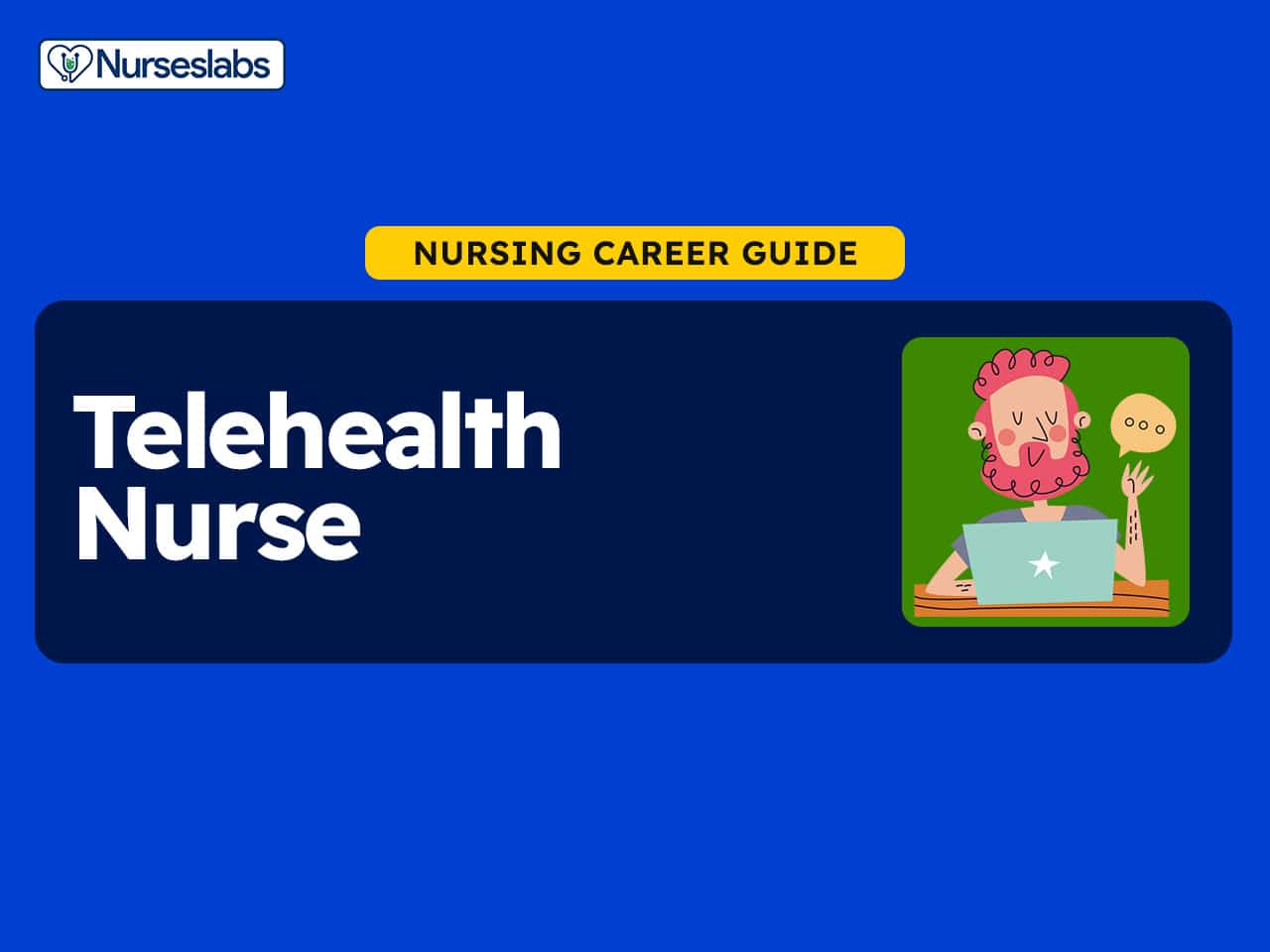





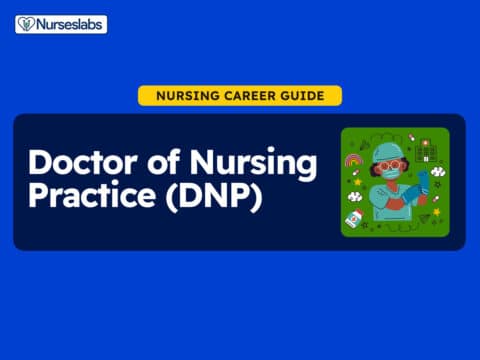


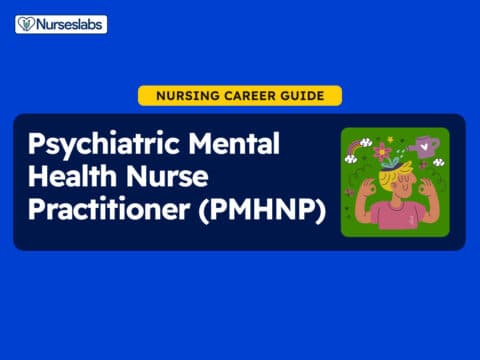
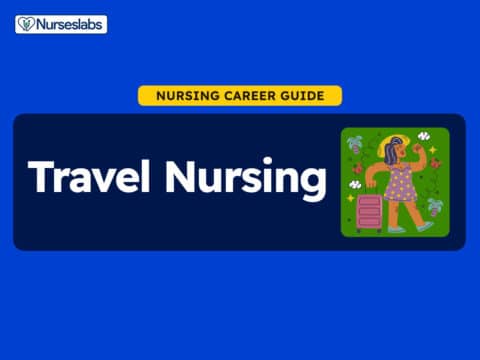
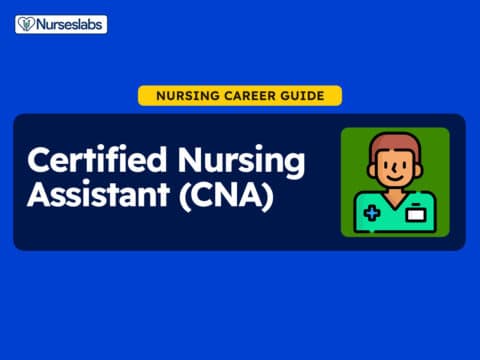




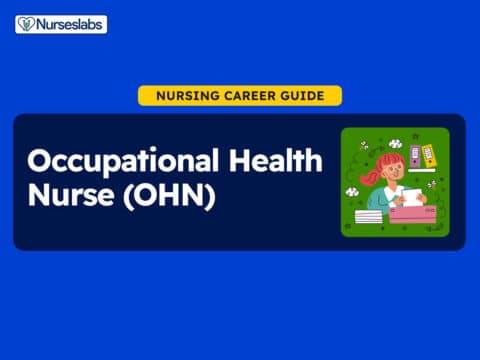
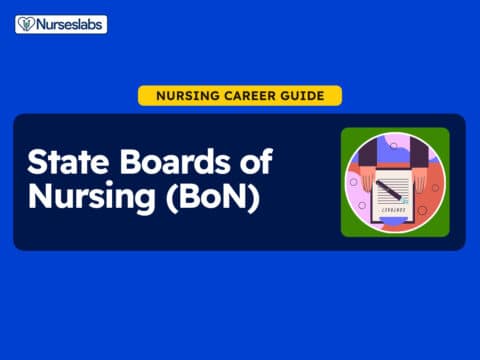







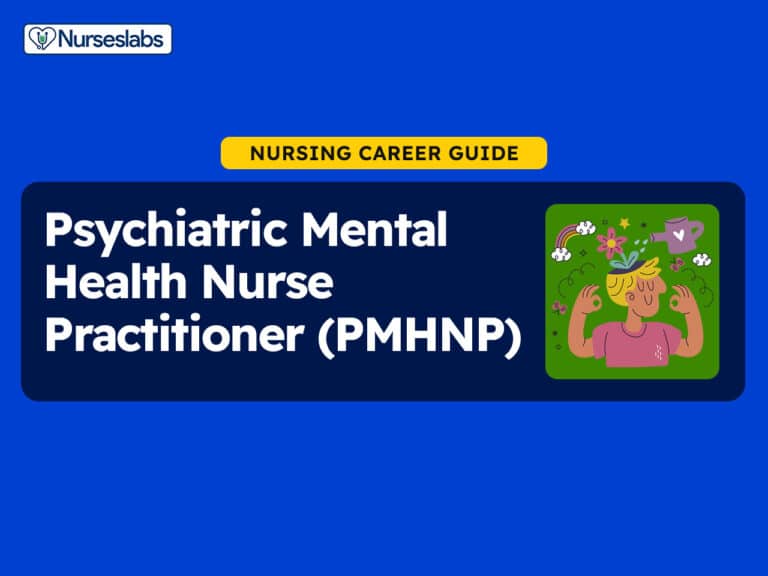
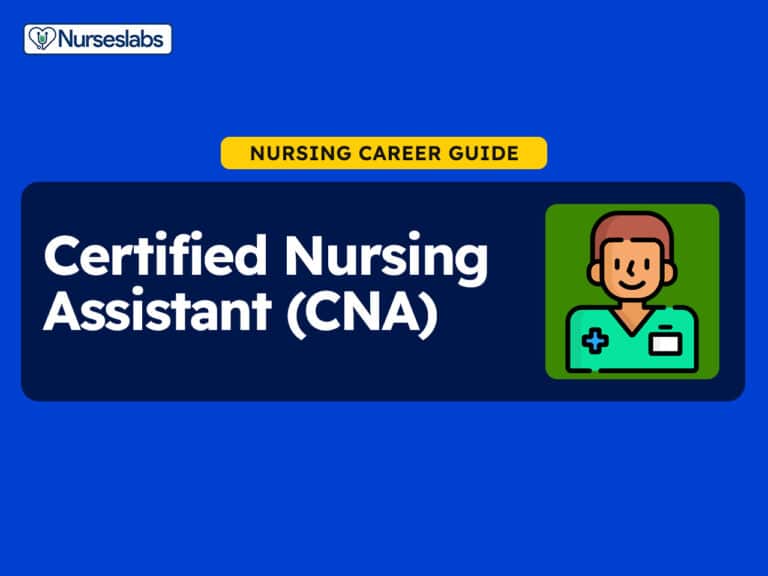

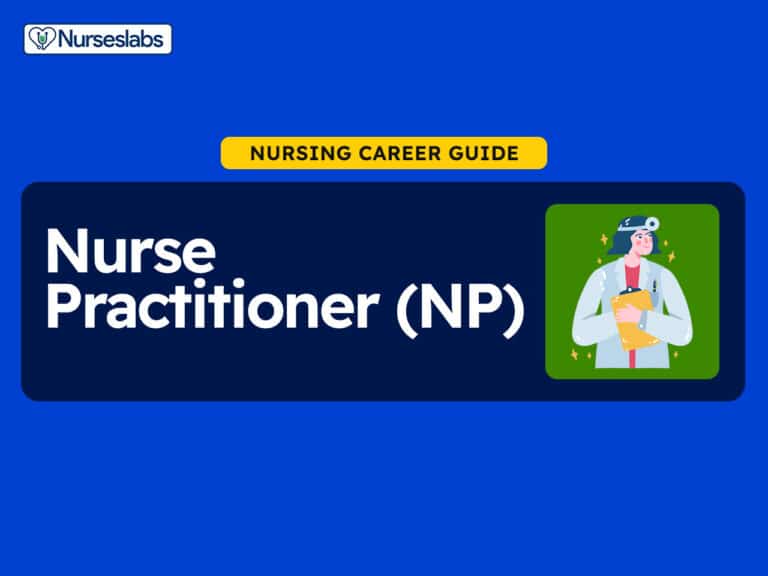

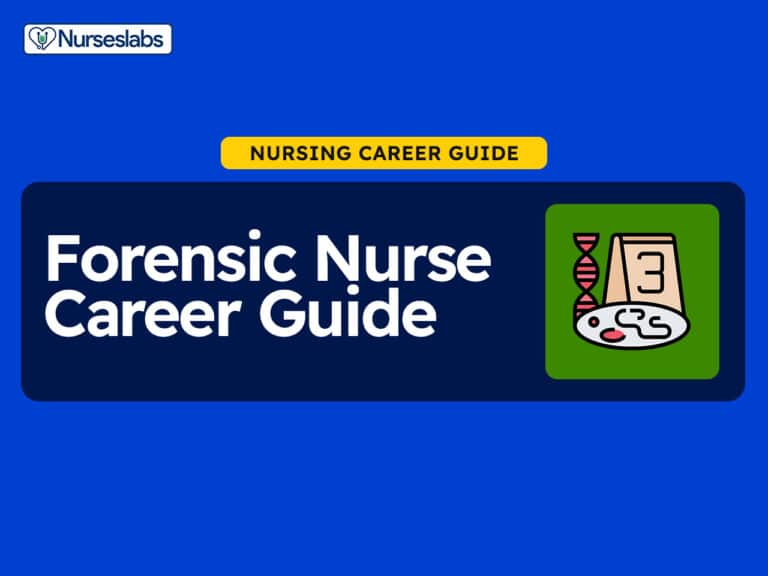



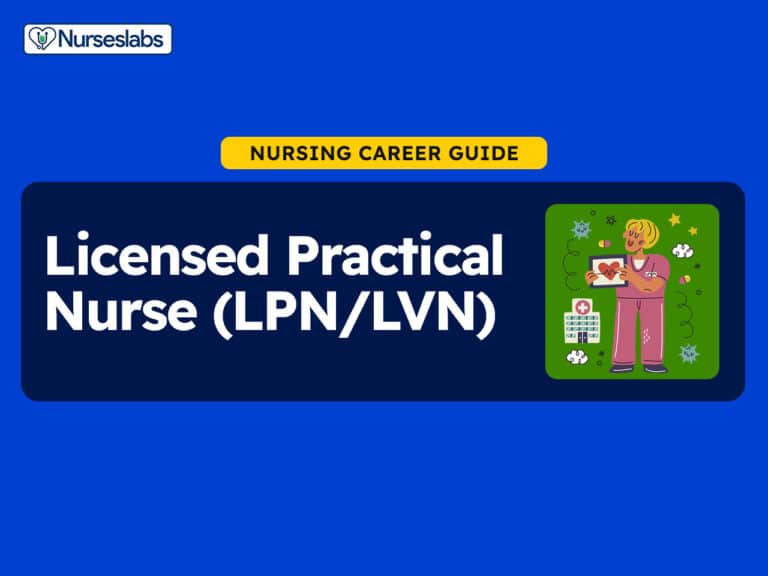


Leave a Comment